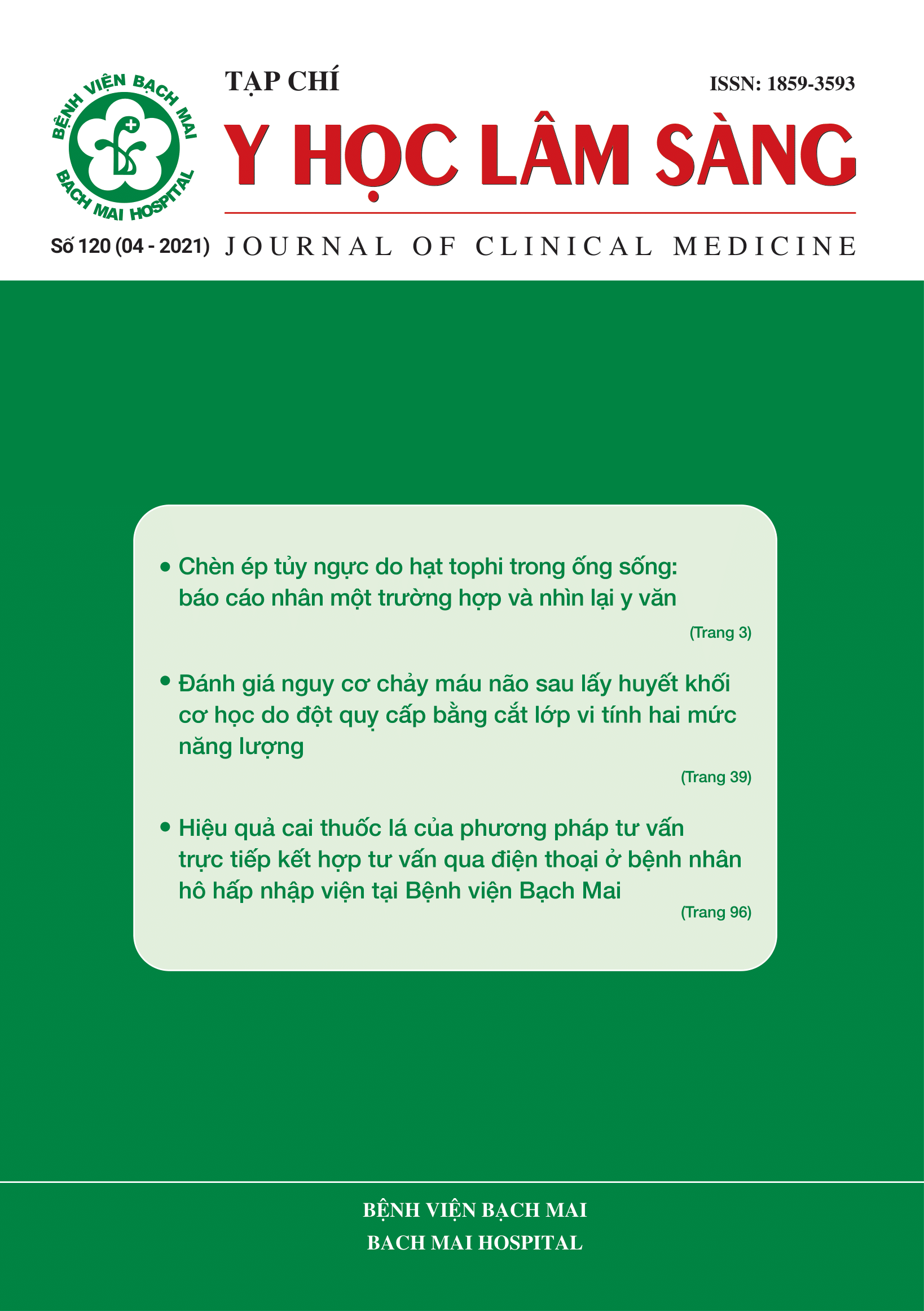Stereotactic body radiation therapy in stage I non-small cell lung cancer patients with peripheral tumors
https://doi.org/10.52322/jocmbmh.120.08
Abstract
Introduction: Stereotactic Body Radiation Therapy (SBRT) now was indicated for early stage non-small cell lung cancer (NSCLC) patients inoperable.
Objectives: The purpose of the study was evaluate the result of SBRT in stage I NSCLC patients (T1-2aN0M0) inoperable with peripheral tumors.
Material and Methods: Prospective, follow-up 23 patients with stage T1-2aN0M0 NSCLC with peripheral tumor, who were received SBRT, follow-up and evaluated from January, 2015 to December, 2020. The primary endpoints were Ojective Response Rate(ORR), Disease Control Rate (DCR), Progression Free Survival (PFS), the second endpoints were Overall Survival (OS) and Toxicity.
Results: The average age was 65.13 years-old, the mean of diameter was 3.31cm, the mean of SUVmax value was 7.77. The stage of the tumor is mostly T2a (60,9%). The median of follow-up was 26 months, ORR was 91.3%, DCR was 95.7%. The median PFS was 26 months, median OS was 58 months, the ratio of OS in 1 year, 2 years, 3 years, 4 years, 5 years were 95.7%, 65.2%, 39.1%, 26.1% và 17.4%, respectively. The common of adverse events was pneumonitis due to SBRT at 9 patients, but mainly was grade 1, no patients have pneumonitis grade 4 and 5. No clinically significant changes in pulmonary function following SBRT for early stage NSCLC.
Conclusion: SBRT was a good option for patients with stage I NSCLC, there was no significant difference in survival between patients who refused surgery and those who have medical inoperable and this is a safe treatment for patients.

